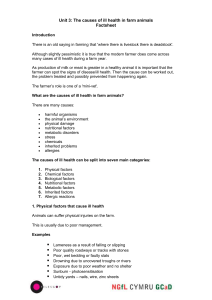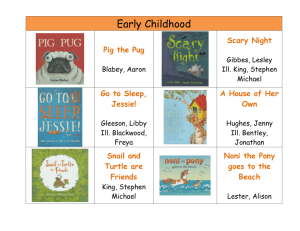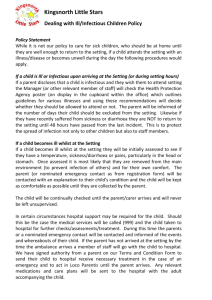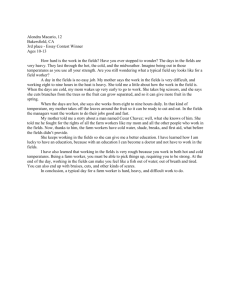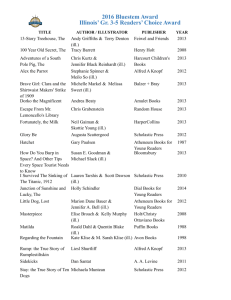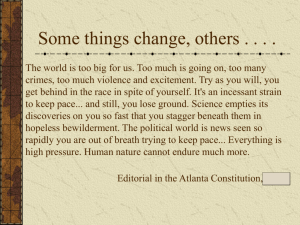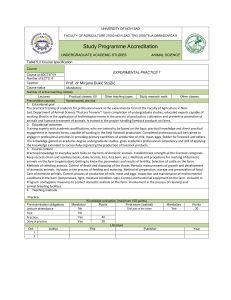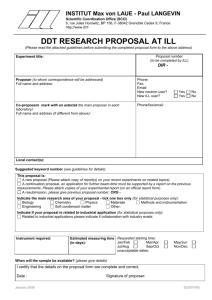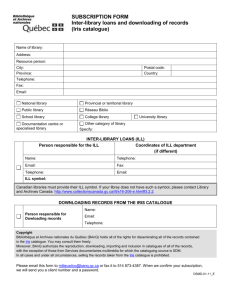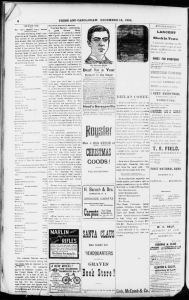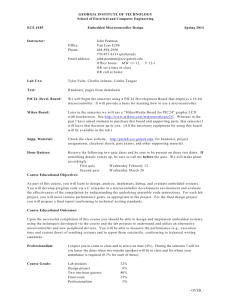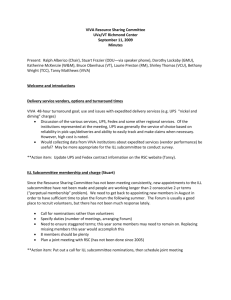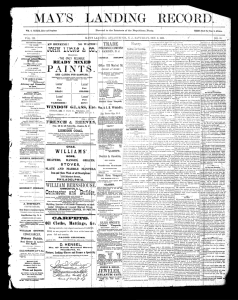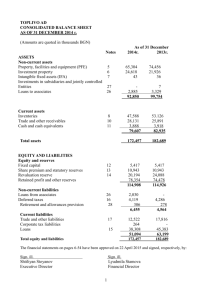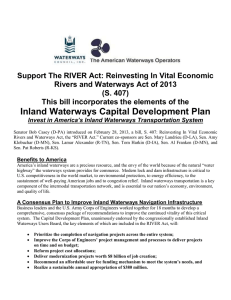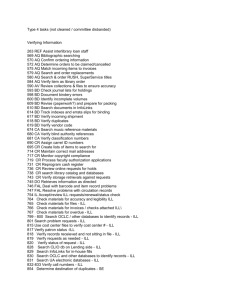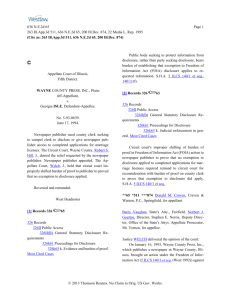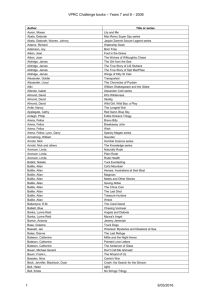Signs of Health and Ill-health in Farm Animals
advertisement
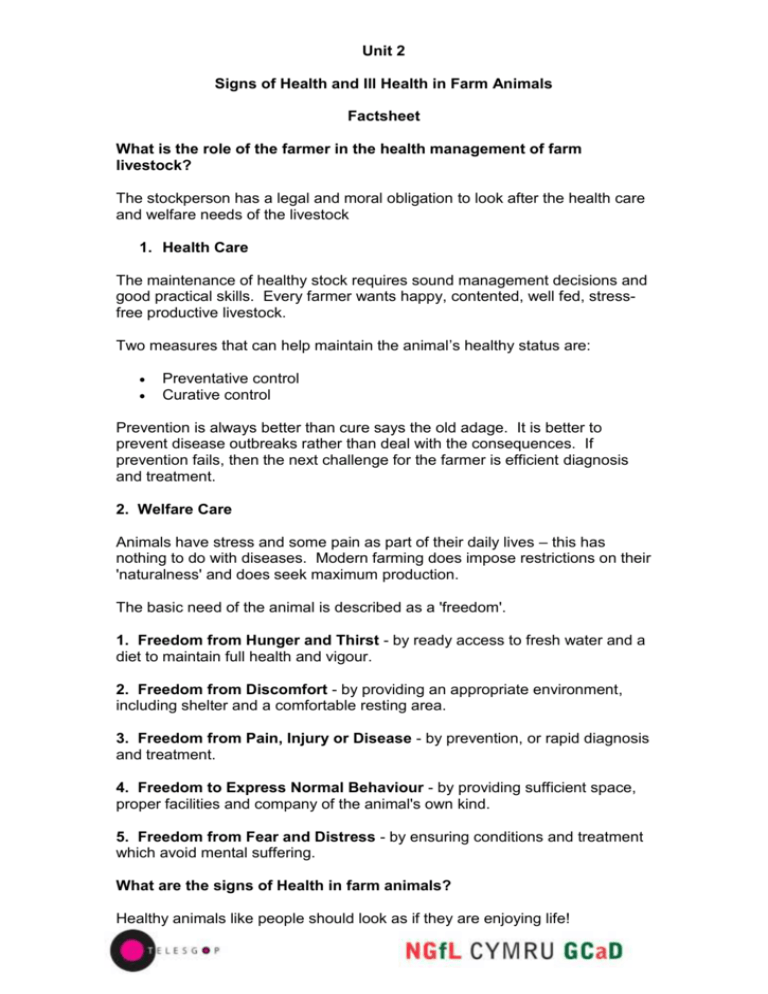
Unit 2 Signs of Health and Ill Health in Farm Animals Factsheet What is the role of the farmer in the health management of farm livestock? The stockperson has a legal and moral obligation to look after the health care and welfare needs of the livestock 1. Health Care The maintenance of healthy stock requires sound management decisions and good practical skills. Every farmer wants happy, contented, well fed, stressfree productive livestock. Two measures that can help maintain the animal’s healthy status are: Preventative control Curative control Prevention is always better than cure says the old adage. It is better to prevent disease outbreaks rather than deal with the consequences. If prevention fails, then the next challenge for the farmer is efficient diagnosis and treatment. 2. Welfare Care Animals have stress and some pain as part of their daily lives – this has nothing to do with diseases. Modern farming does impose restrictions on their 'naturalness' and does seek maximum production. The basic need of the animal is described as a 'freedom'. 1. Freedom from Hunger and Thirst - by ready access to fresh water and a diet to maintain full health and vigour. 2. Freedom from Discomfort - by providing an appropriate environment, including shelter and a comfortable resting area. 3. Freedom from Pain, Injury or Disease - by prevention, or rapid diagnosis and treatment. 4. Freedom to Express Normal Behaviour - by providing sufficient space, proper facilities and company of the animal's own kind. 5. Freedom from Fear and Distress - by ensuring conditions and treatment which avoid mental suffering. What are the signs of Health in farm animals? Healthy animals like people should look as if they are enjoying life! Here are points to look out for: Healthy Animals Sick Animals They have close contact although Usually isolated and not running with the scattered will run towards each other to flock/herd. form a group. Definite physical activity. They are usually Immobile and not interested. eating, walking, playing, grooming or cuddling. They will always stretch after rising. Farm animals tend to be greedy if they are Ill animals have no/little appetite. well and always want food. The excretion pattern is the same and the Diarrhoea or the absence of dung or urine dung consistency matches the feed type. is a sure sign that there is something There is never any blood and the urine is wrong. a light colour. The bovine coat is usually shiny and has A dull coat in a bovine is a bad sign. If lick marks on it. The sheep’s fleece is sheep are ill, usually their wool breaks or tight and not matted and it should be falls out. springy. The eyes are clear, bright and alert. Eye Ill animals have sunken eyes and dull. sockets should be pinky. Eyelids stop blinking. If eye sockets are pale/white, this usually means anaemia. There are no abnormal discharges from Ill animals can have discharges from the body. eyes, mouth, nose, navel, anus, vagina, teats, ears or penis. Healthy animals walk well and in a straight Ill animals can walk stiffly, wobble or go line. round in a circle. Creaking and swollen joints are signs of ill health. The metabolic traits (pulse rate, breathing The metabolic traits are higher, lower than and heartbeat) are normal. normal or are erratic. The importance of taking temperature The temperature of a farm animal can be used to diagnose ill health according to a pathogen. Normal Temperatures of Farm Animals Animal Cattle Sheep Pigs Horse Temperature Respiration rate Pulse rate Degrees Centigrade Per minute Per minute 38.7 39.4 39.2 37.5 12-20 12-30 10-18 8-12 45-50 70-90 70-80 36-42 Note. All temperatures can vary slightly within species depending on the weather conditions. It will only change by 0.1 - 0.3 degrees. Young calves, lambs, piglets and foals tend to have higher temperatures and pulse rates.


